Δαμάζοντας το τσουνάμι
Είναι ένα τσουνάμι που φουσκώνει και χτυπάει όλες τις ακτές, όπως και τις στεριές. κι είναι μόνιμο και έχει μερικές δεκαετίες που όλο και ψηλώνει....
The second Walking.School excursion is a reality! A walk in Central Amsterdam by the Ij. We started at Amsterdam Centraal, walked along Oosterhavengbiet all the way to the iconic Pythonbrug. We returned via the Nieuwe Markt where we finished the walk with tasty cookies!
Walking.School 02 took place on 12 February 2022, starting at 2:00 pm and lasting for a couple of hours. This is roughly the path of the walk.
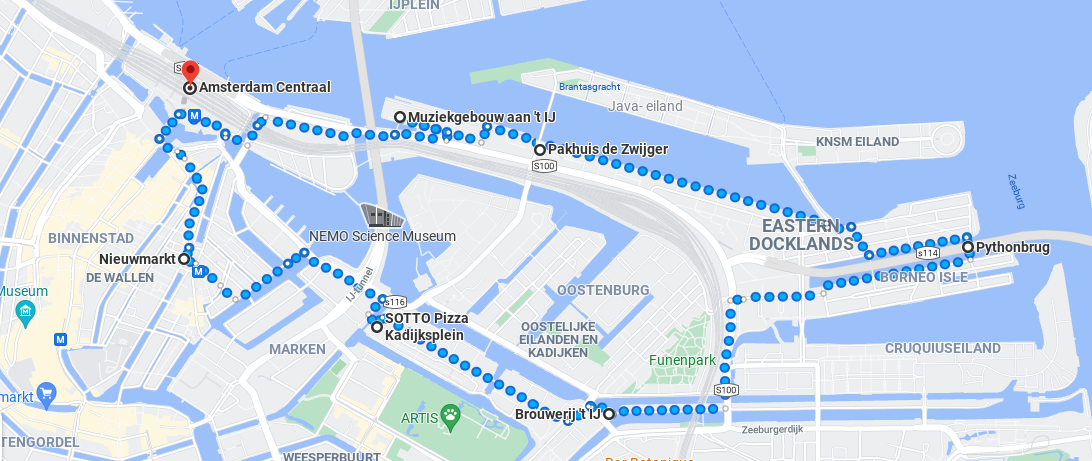
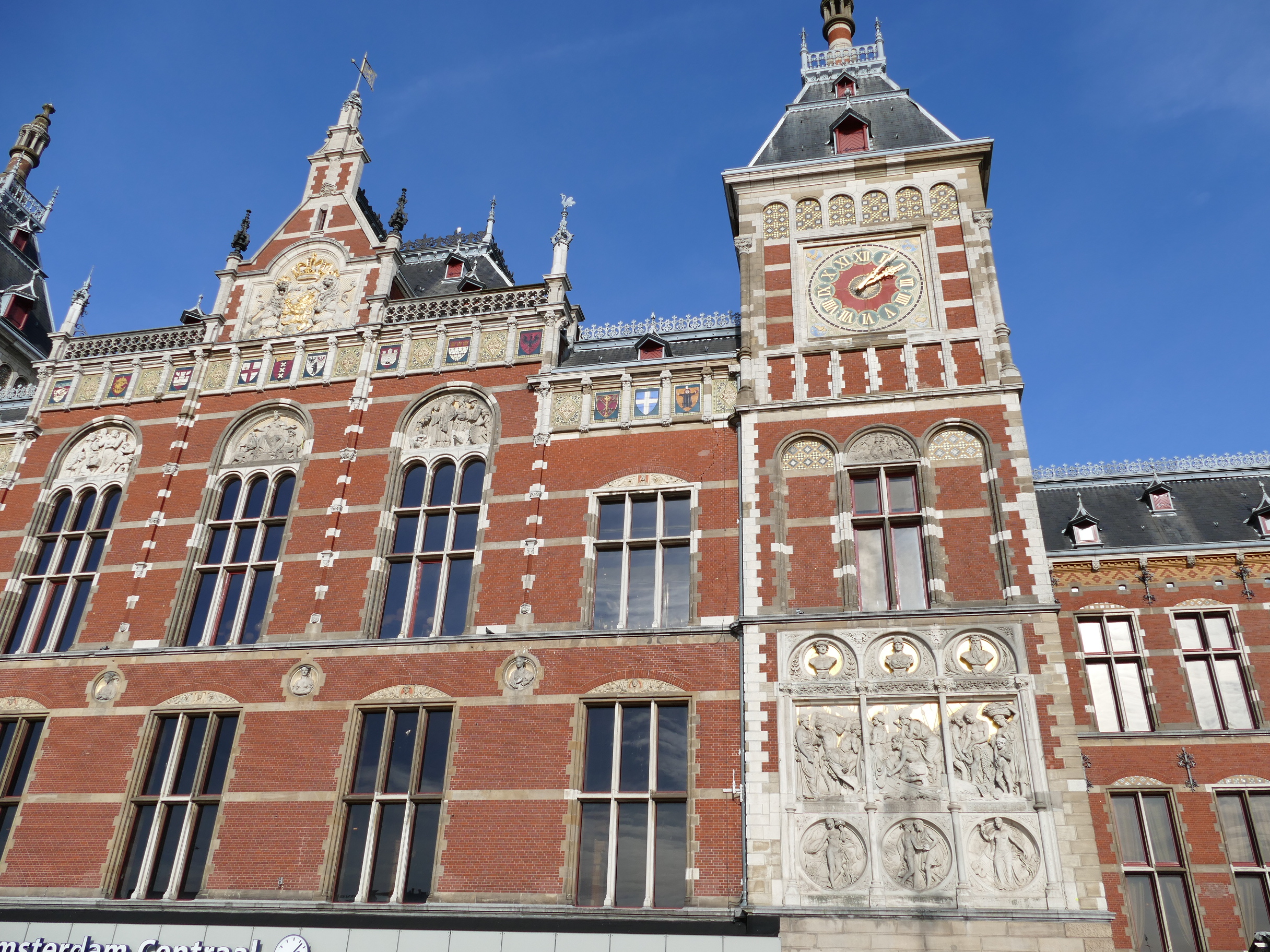
Our walk starts at Amsterdam Centraal, the city's historic main station. Amsterdam Centraal was designed by Dutch architect Pierre Cuypers and opened in 1889. Cuypers' design resembles his other architectural masterpiece, the Rijksmuseum.
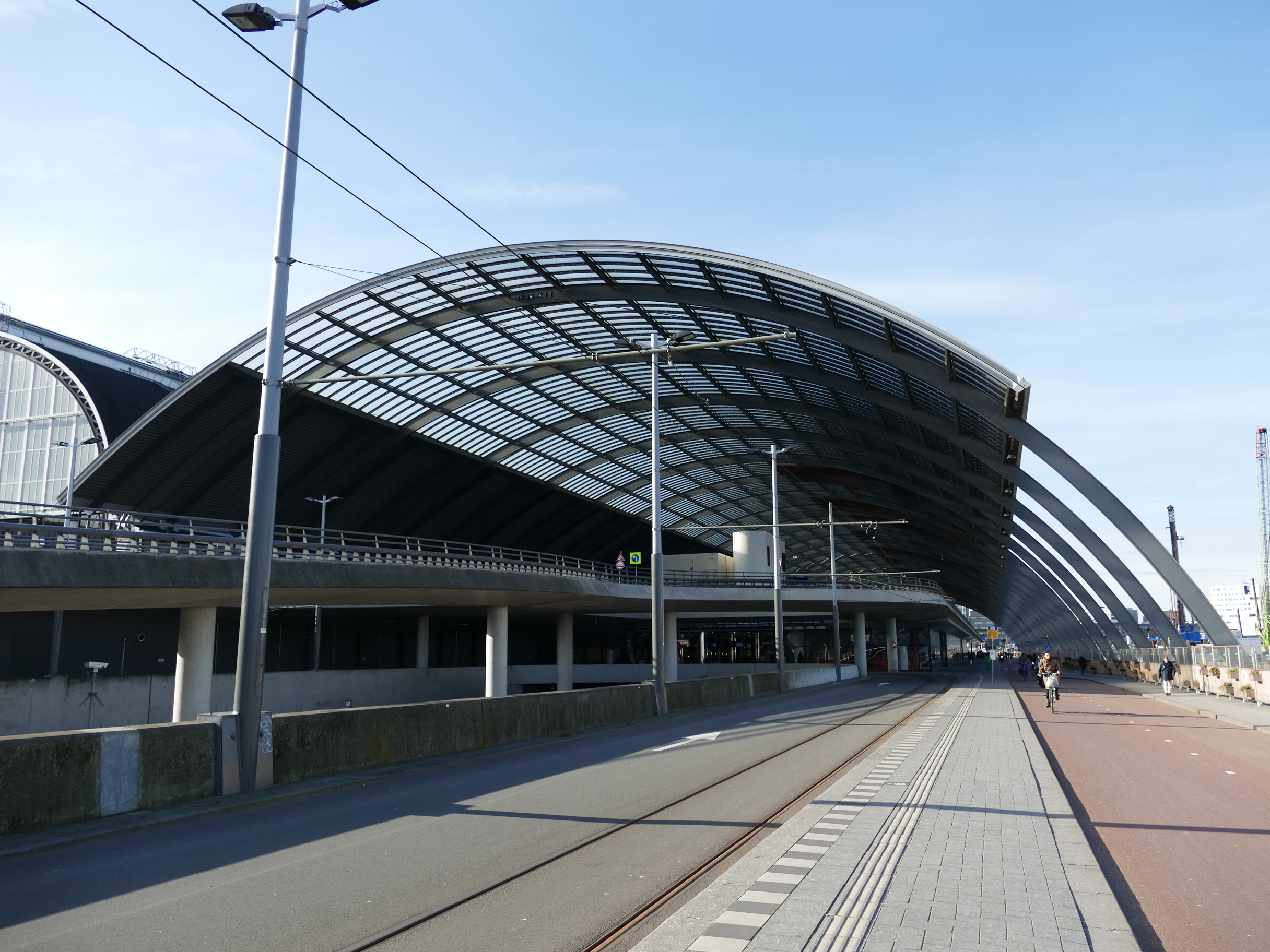
As it happens, just a few days before the walk the municipality finalized a "Memorandum of Principles" for the Jump over the IJ. This plan aims to establish permanent connections between Amsterdam-North and the rest of Amsterdam. As early as the 19th century, people thought how to connect the two pieces of the city, but all proposals always remained in the realm of ideas. If the city council agrees to this proposal, it will define broadly where the bridges will be built over the waterway. The exact locations will be determined in the coming period, but they are roughly as indicated in the map below.
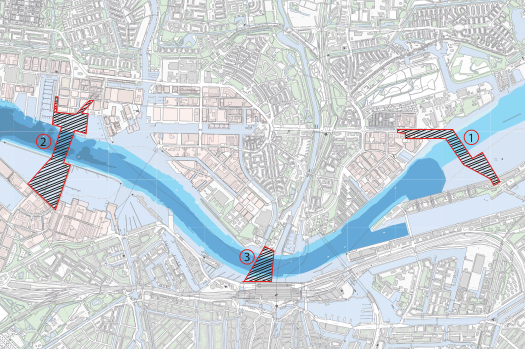
We start walking towards the Eastern Docklands and we past first along a beautiful art piece representing an Abacus. The abacus is a calculating tool which has been used since ancient times.
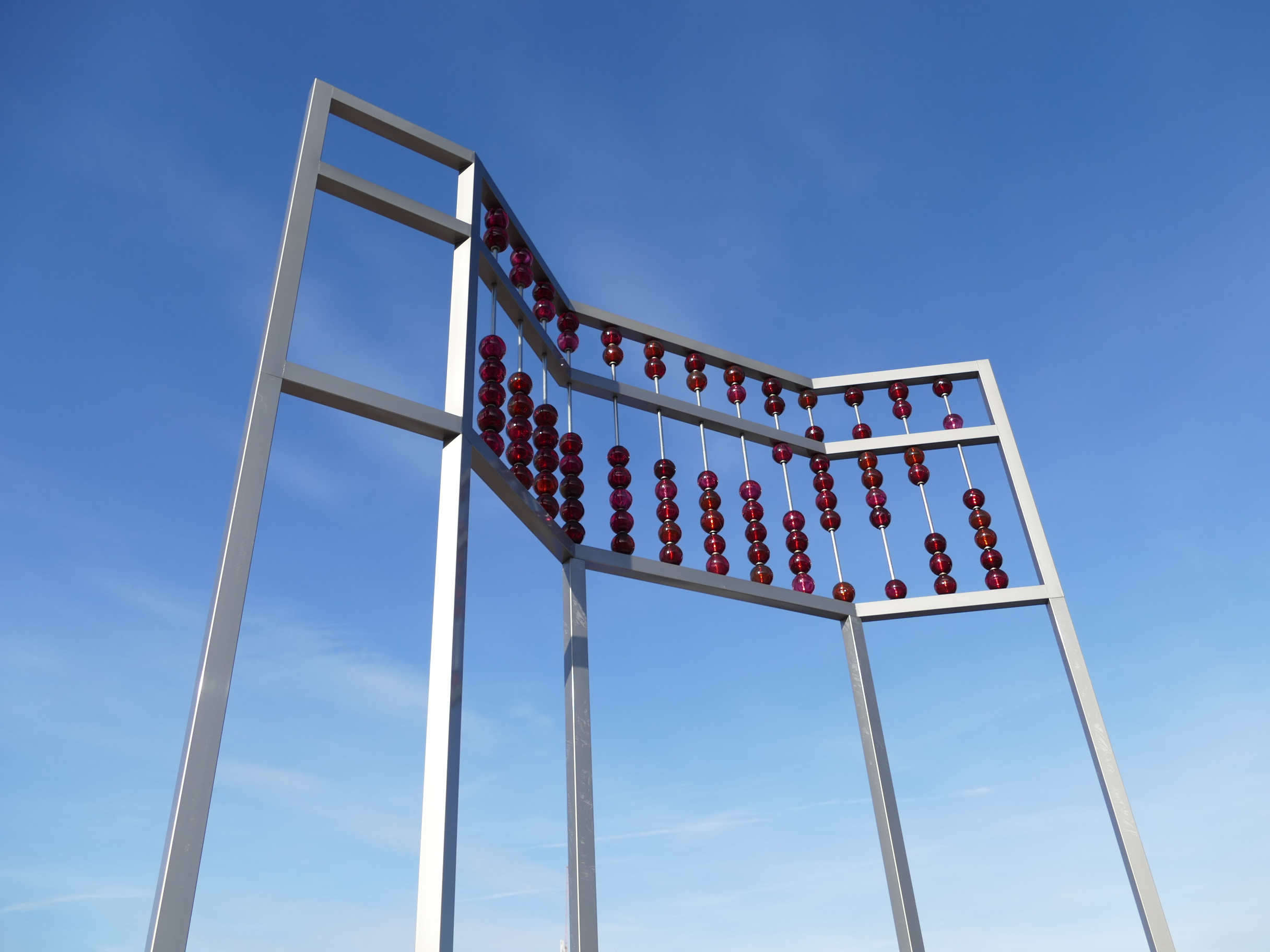
Does the arrangement of beads represent something? Read the notes at the end1 for the answer
We next walk past the entrance of the Amsterdam Passenger Terminal and the Pakhuis de Zwijger. The pakhuis (warehousr) was built during the heyday of Amsterdam's Eastern Docklands area and was used as a warehouse for refrigerated goods. It now serves as a cultural meeting place for creative and innovative types.
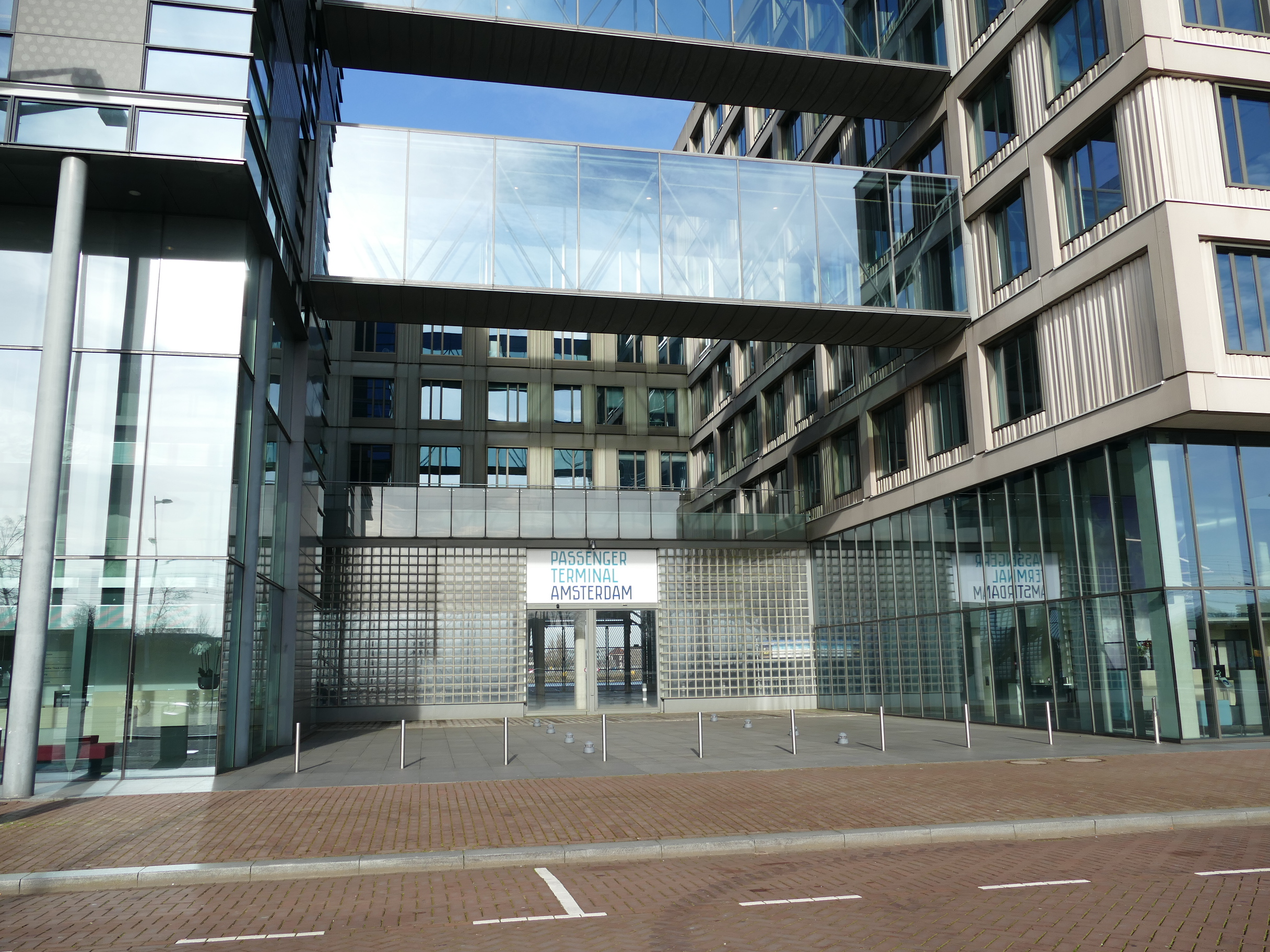
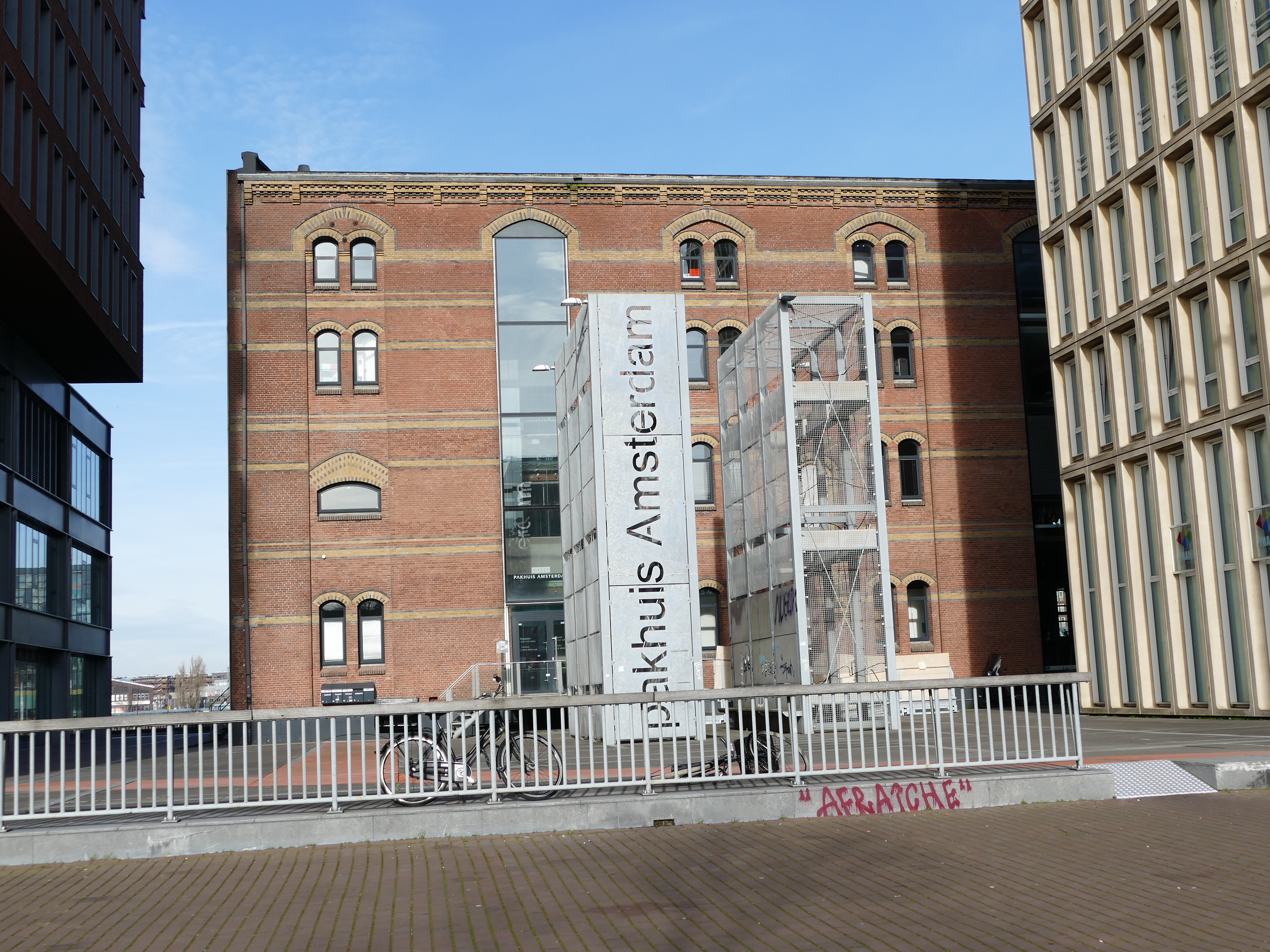
The striking Jan Schaeferbrug spans the IJhaven and connects the Eastern Docklands with the Java-island.
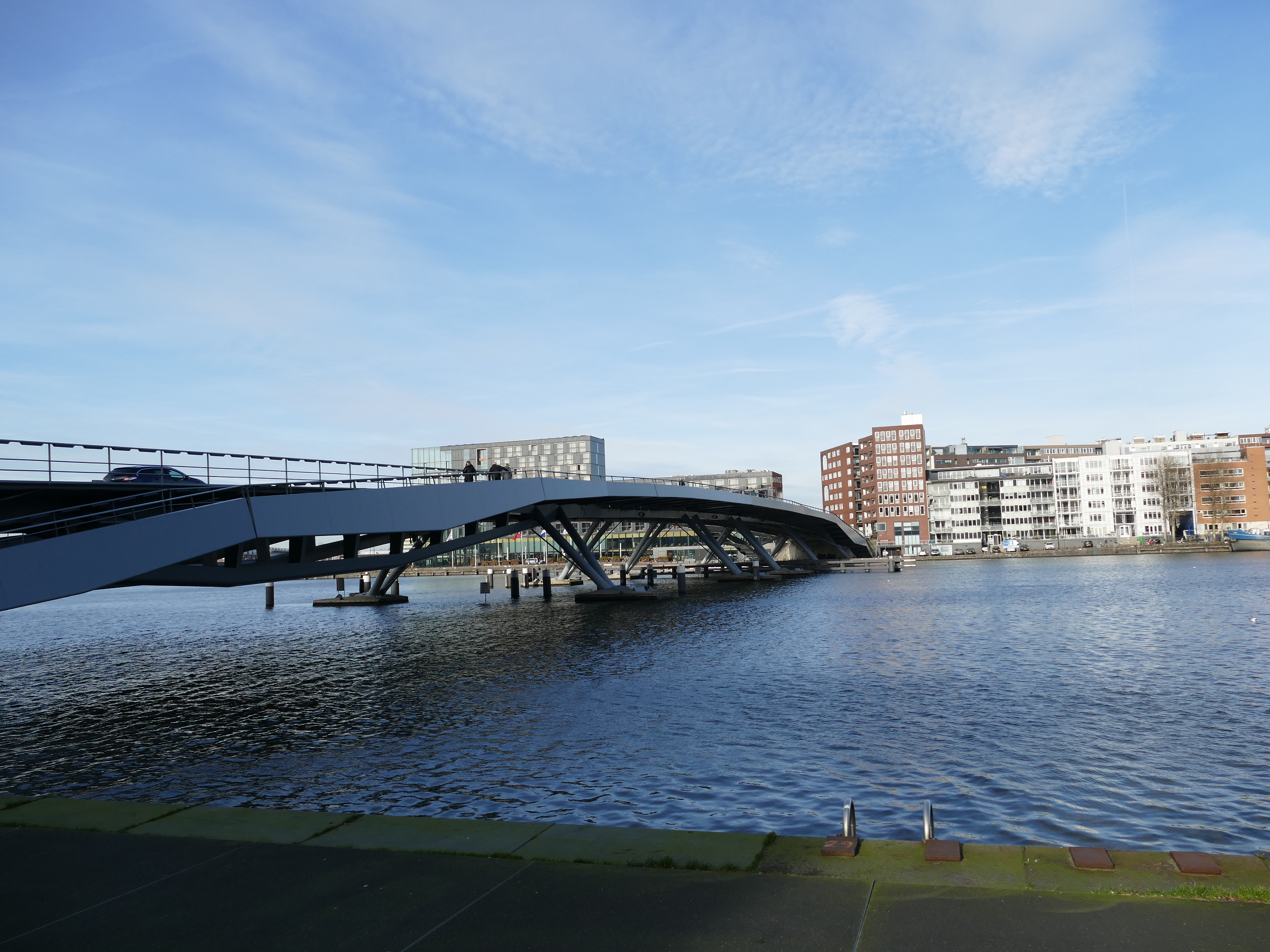
A lonely European Union flag flapping in the strong wind of the day.
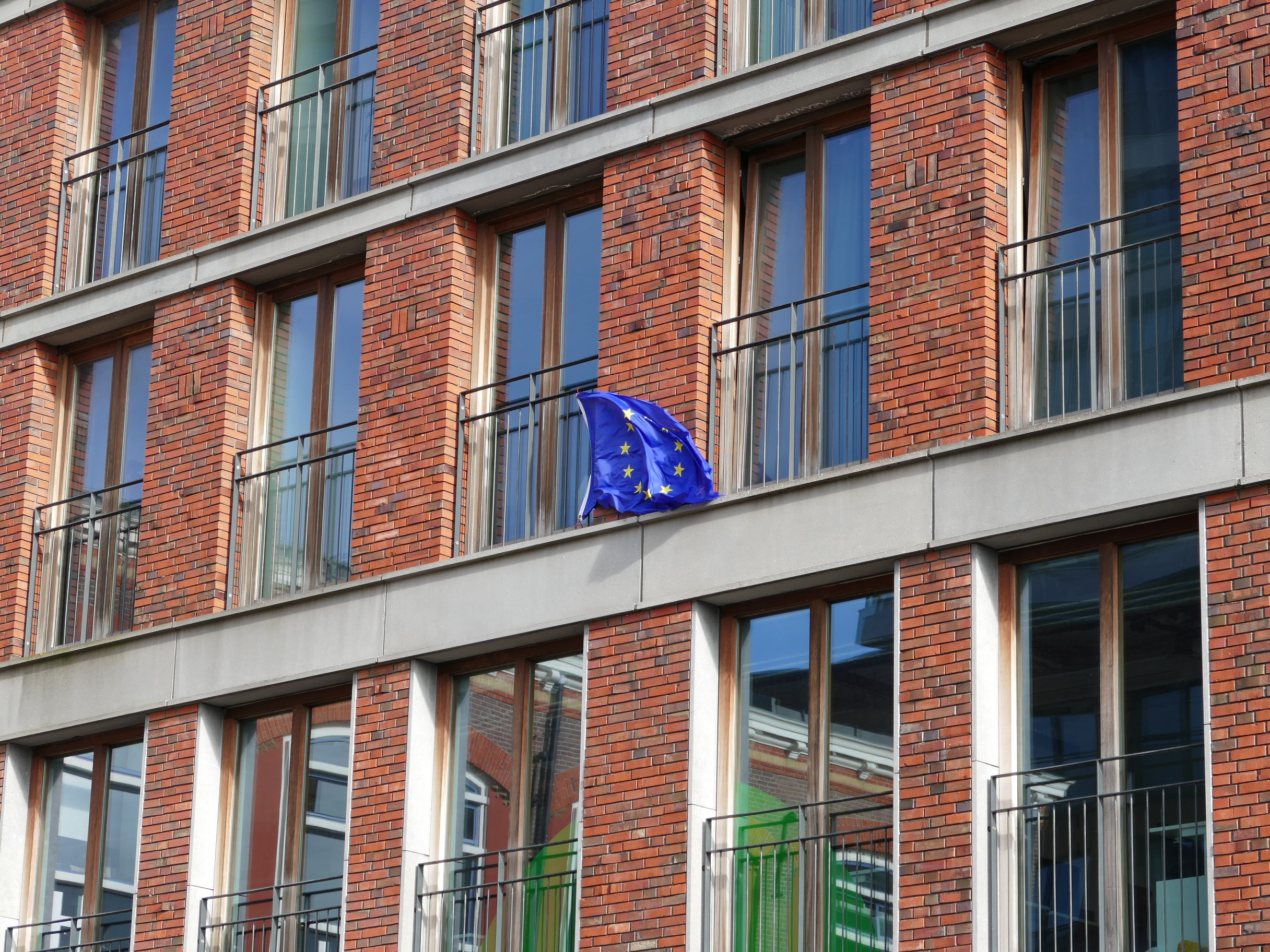
We walk past the Lloyd Hotel a historic building in the Eastern Docklands of Amsterdam. It was founded as a hotel, it initially housed travelling immigrants. From 1921 to 1936 the building was used as temporary accommodation for immigrants, mostly poor Eastern European Jews that undertook the journey to South America to escape the pogroms.
The line was operated by the Koninklijke Hollandsche Lloyd (KHL) which was a Dutch shipping company based in Amsterdam. Every three weeks there would be a ship to South America. It went bankrupt in 1935 and the building became property of the city.

After 1989, the building was neglected. It was then managed by the Spinoza Foundation and served, among other things, as a studio space for artists from the former Yugoslavia.

We proceed to the further point along the Docklands and the elegant Python bridge. The official name of this footbridge is "Tall Bridge". It was constructed in 1998. The name alludes to the wavy curves of a python (the snake, not the programming language!). It was included in a list of the 18 most beautiful bridges in the world that was compiled by the Architectural Digest in 2019.
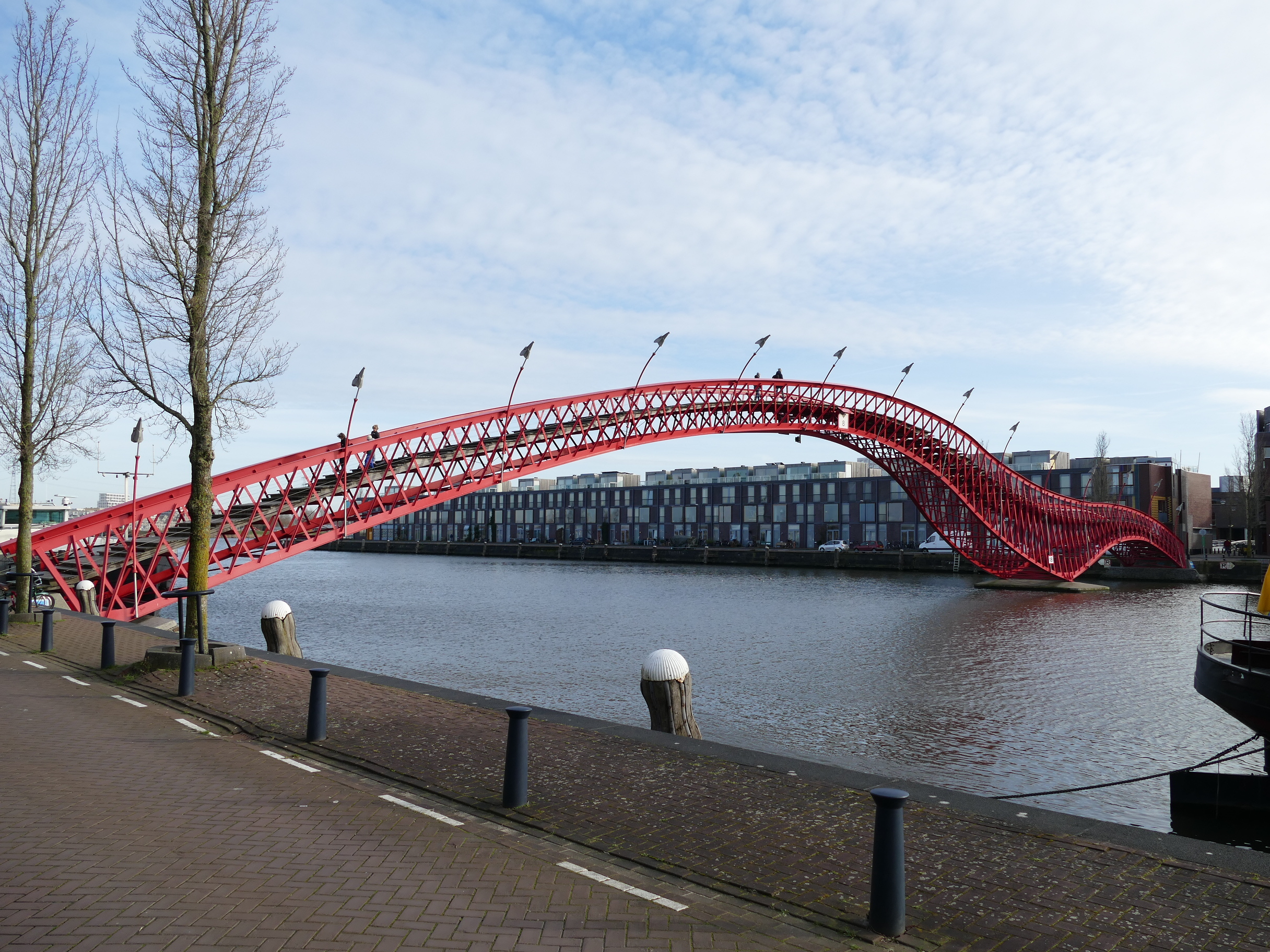
Amsterdam is not famous for its graffiti. Yet on the way back towards the center we pass an area with some very artistic examples.
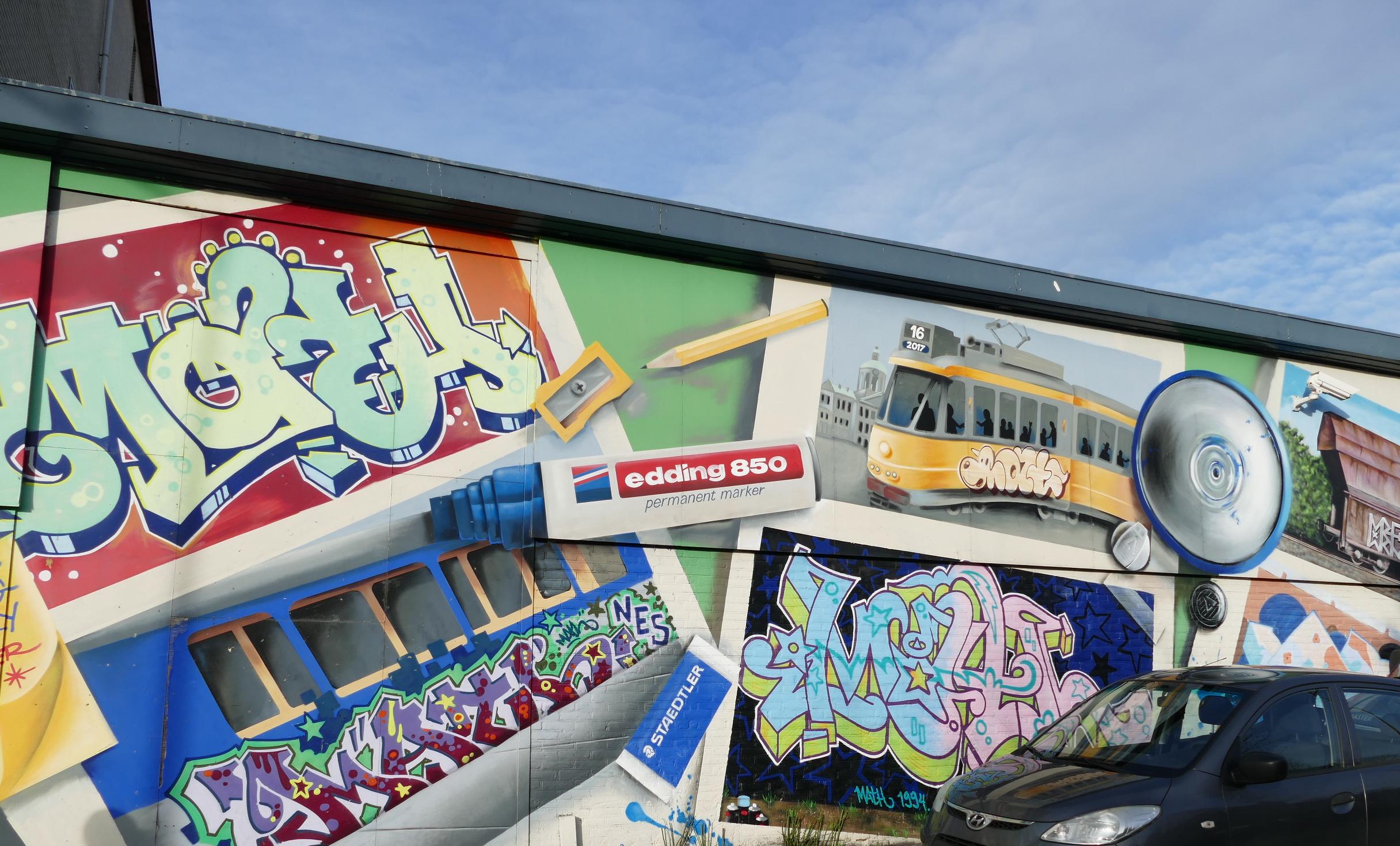
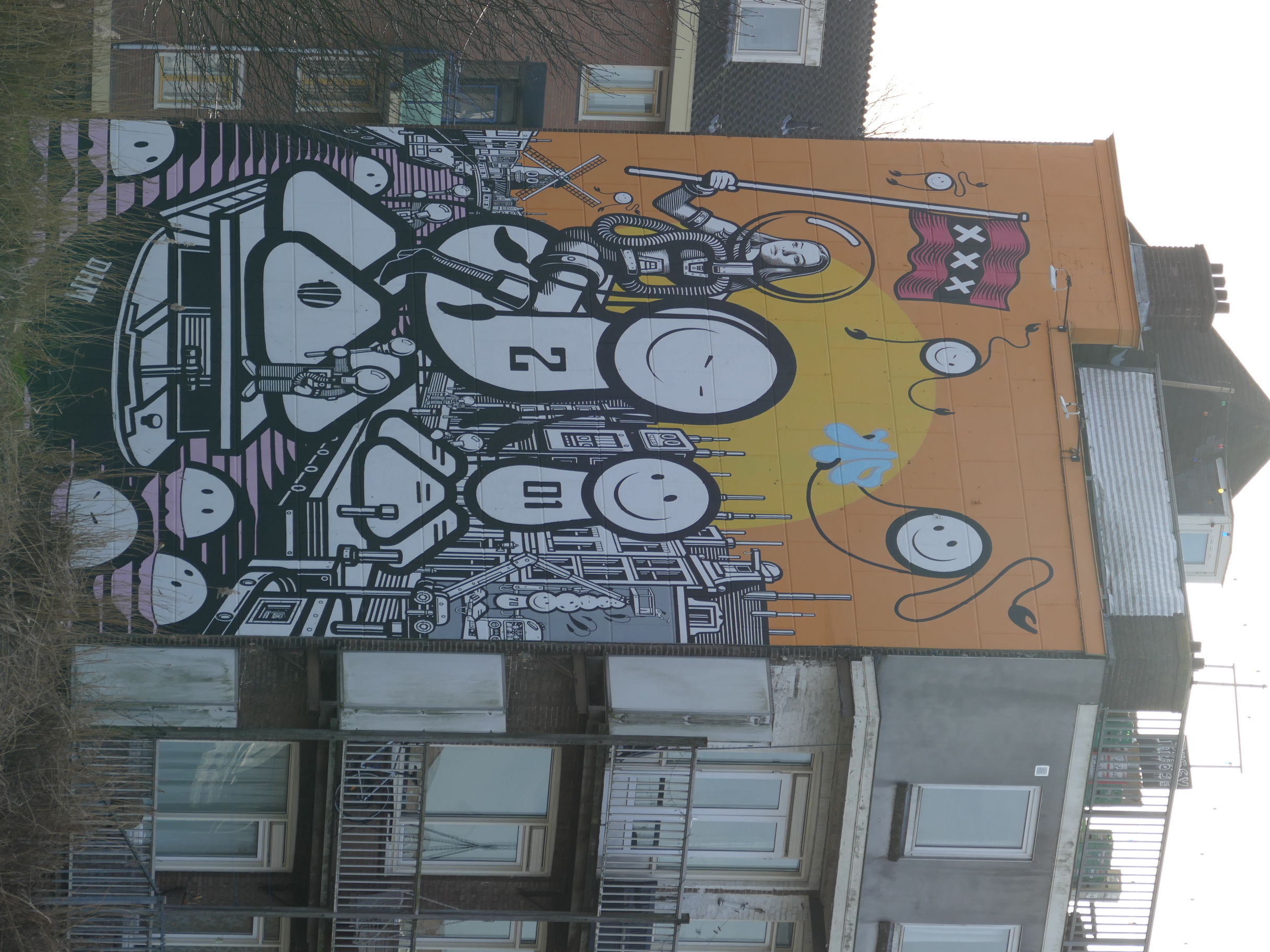
We past next to Molen de Gooyer and one of the most famous Amsterdam specialty breweries, the Brouwerij 't IJ. The wind mill is the last remaining of a large group of flour mills that stood on the Buitensingelgracht between the 17th century and the end of the 19th century. The original mill dates back to the 16th century. The name purportedly refers to its height enabling to see all the way to the Gooi.
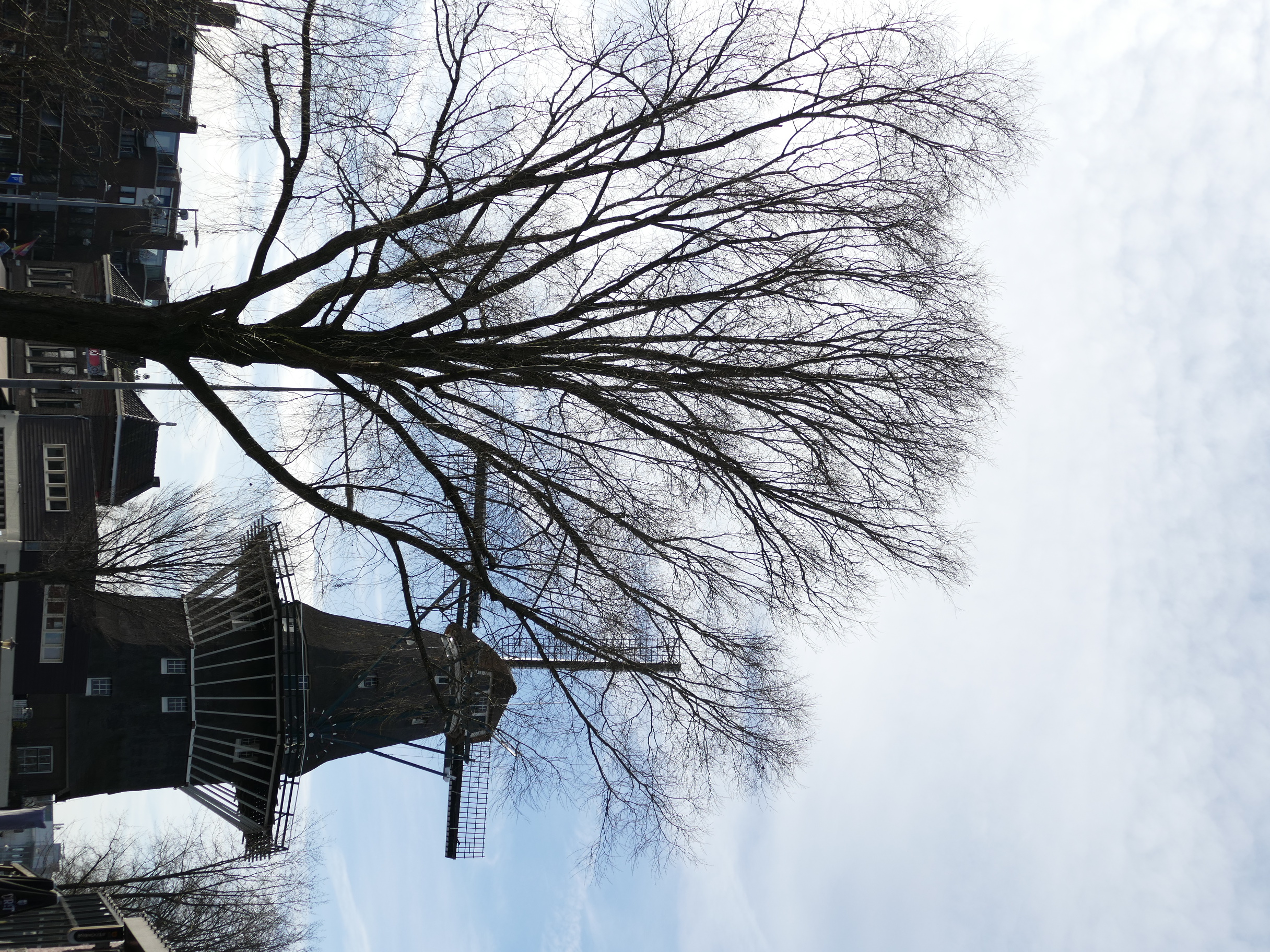
The Entrepotdok is a canal featuring a complex of former warehouses. The oldest warehouses in the complex were built around 1708. The converted warehouses form the largest inhabited warehouse complex in Amsterdam.
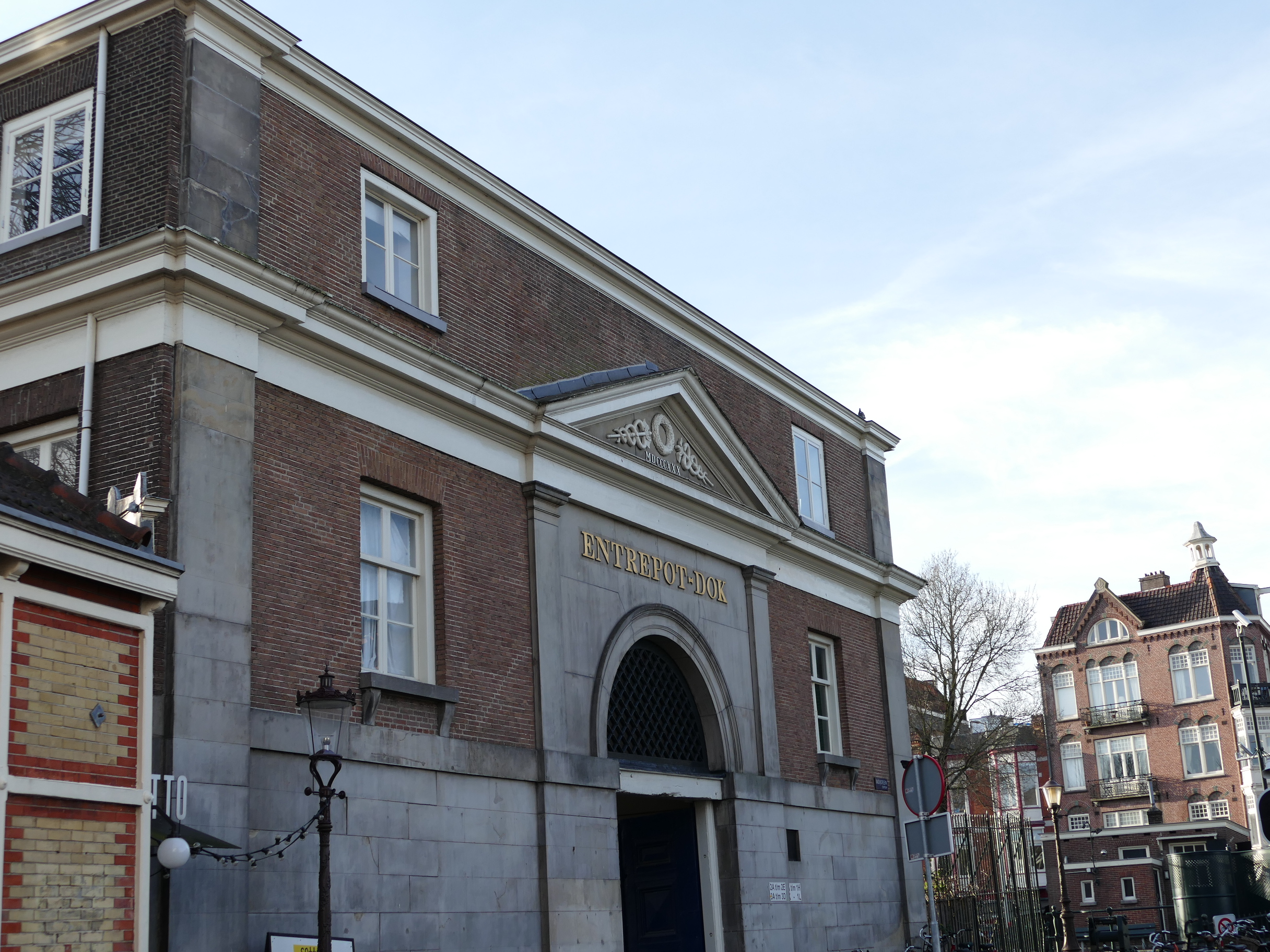
Finally we return to the Nieuwmarkt and its lively outdoor market. The most important building here is of course De Waag, a 15th-century building. It was originally a city gate. The current name refers to its later function as weigh house. The building has had over the course of history a range of other functions, including guildhall, museum, fire station and anatomical theatre. The famous painting The Anatomy Lesson of Dr. Nicolaes Tulp by Rembrandt, the dissection of a corpse takes place in the Waag.
Today it houses also the Waag Society, an avant-gard forum and podium for public research and public events in the field of the cultural, social and scientific developments of the old and new media.
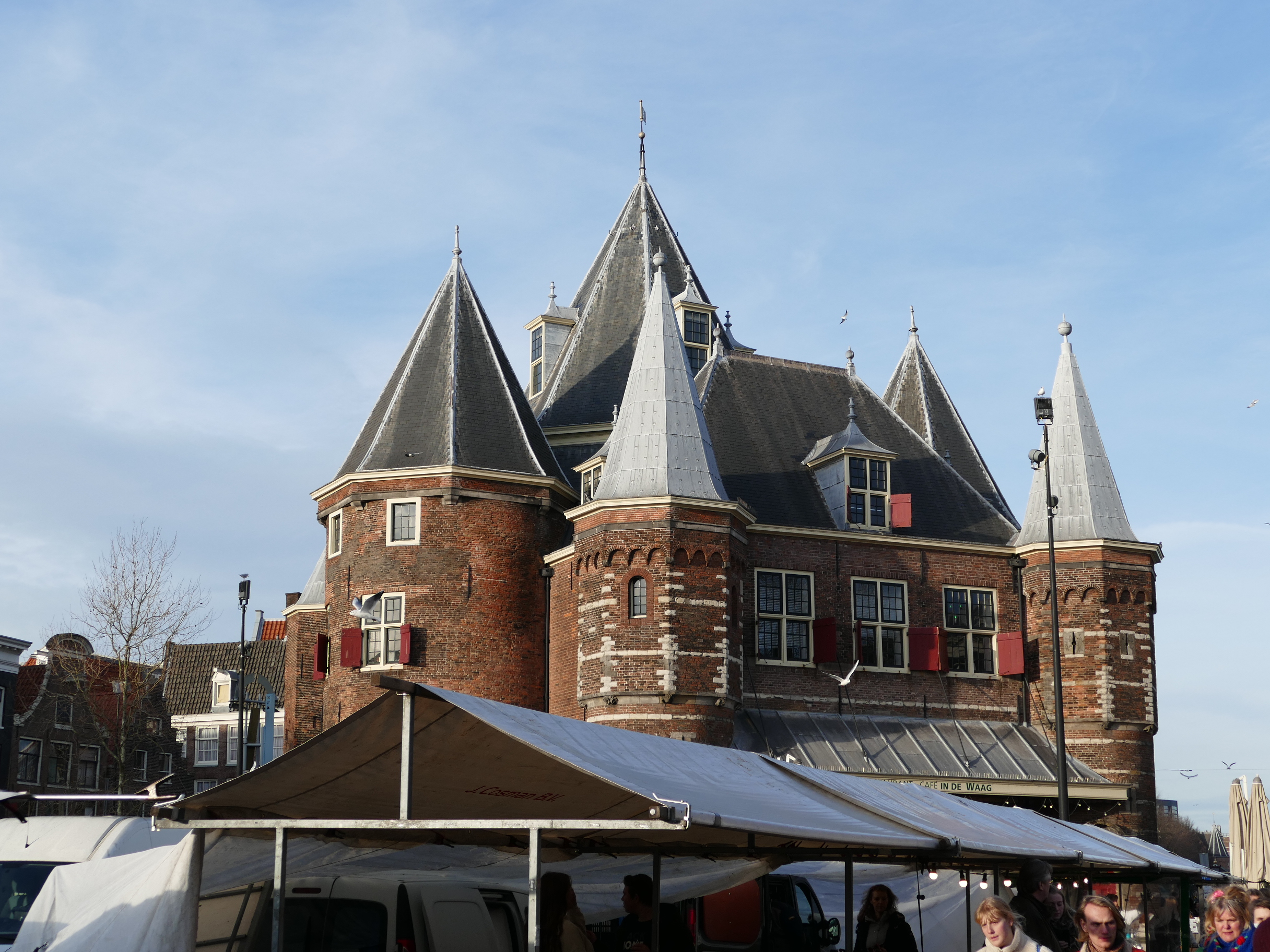
We conclude the excursion with cookies from the market.
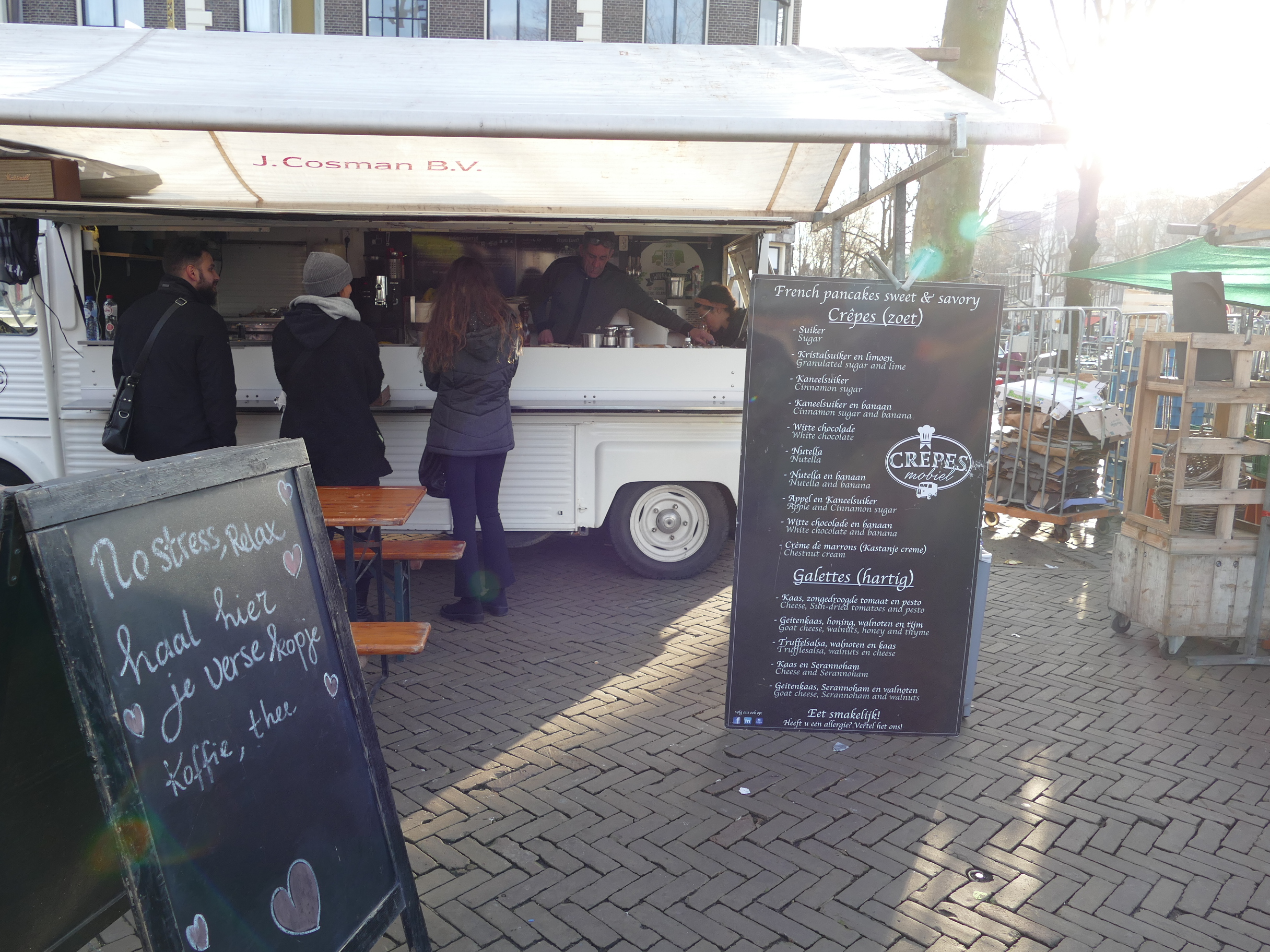
Looking forward to the next Walking School!
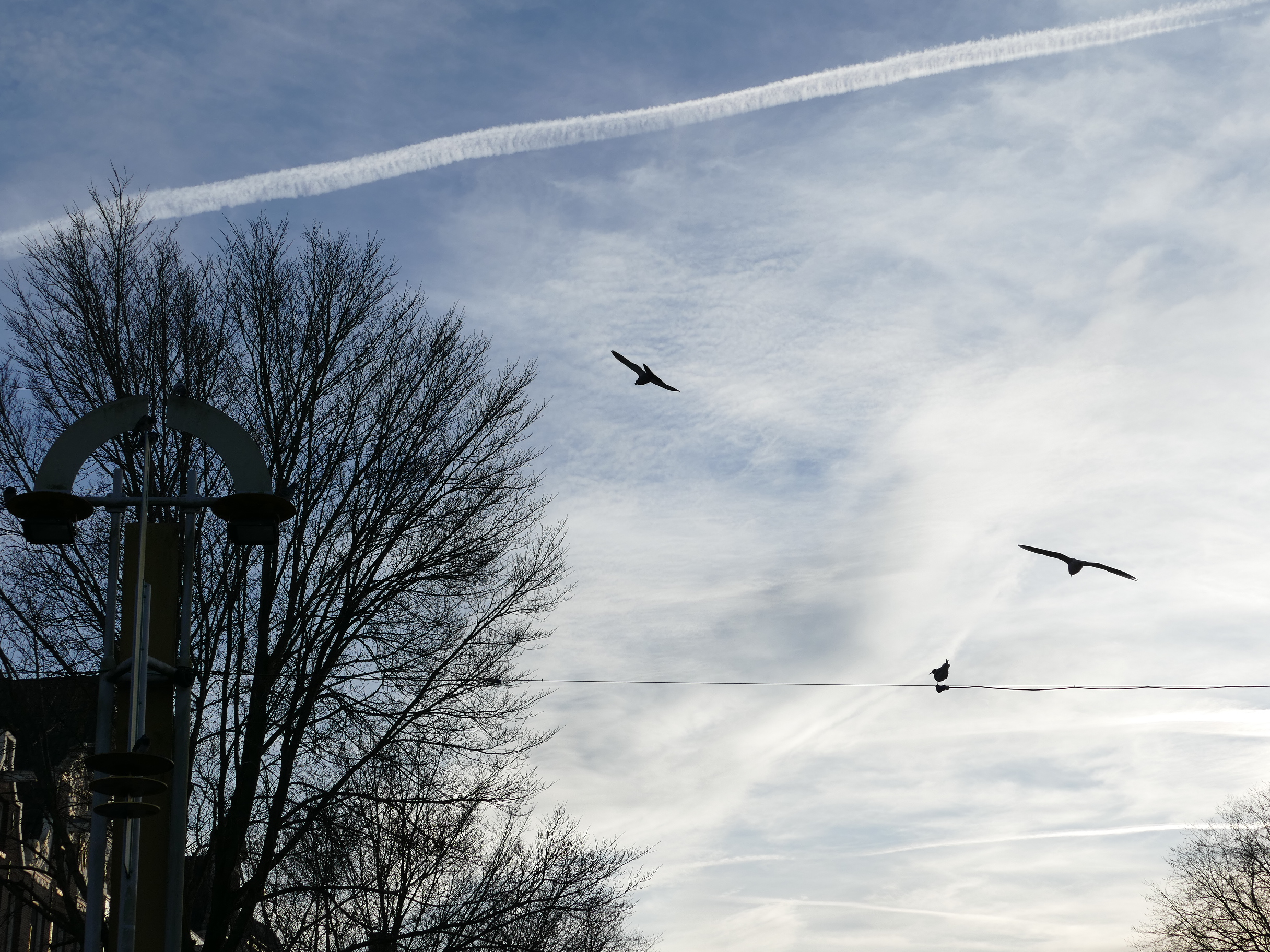
The "abacus" actually is the Amsterdam AIDS Monitoring Monument. The monument was designed by French artist Jean-Michel Othoniel and is called Living by Numbers. The monument symbolises being able to count on yourself and others. ↩